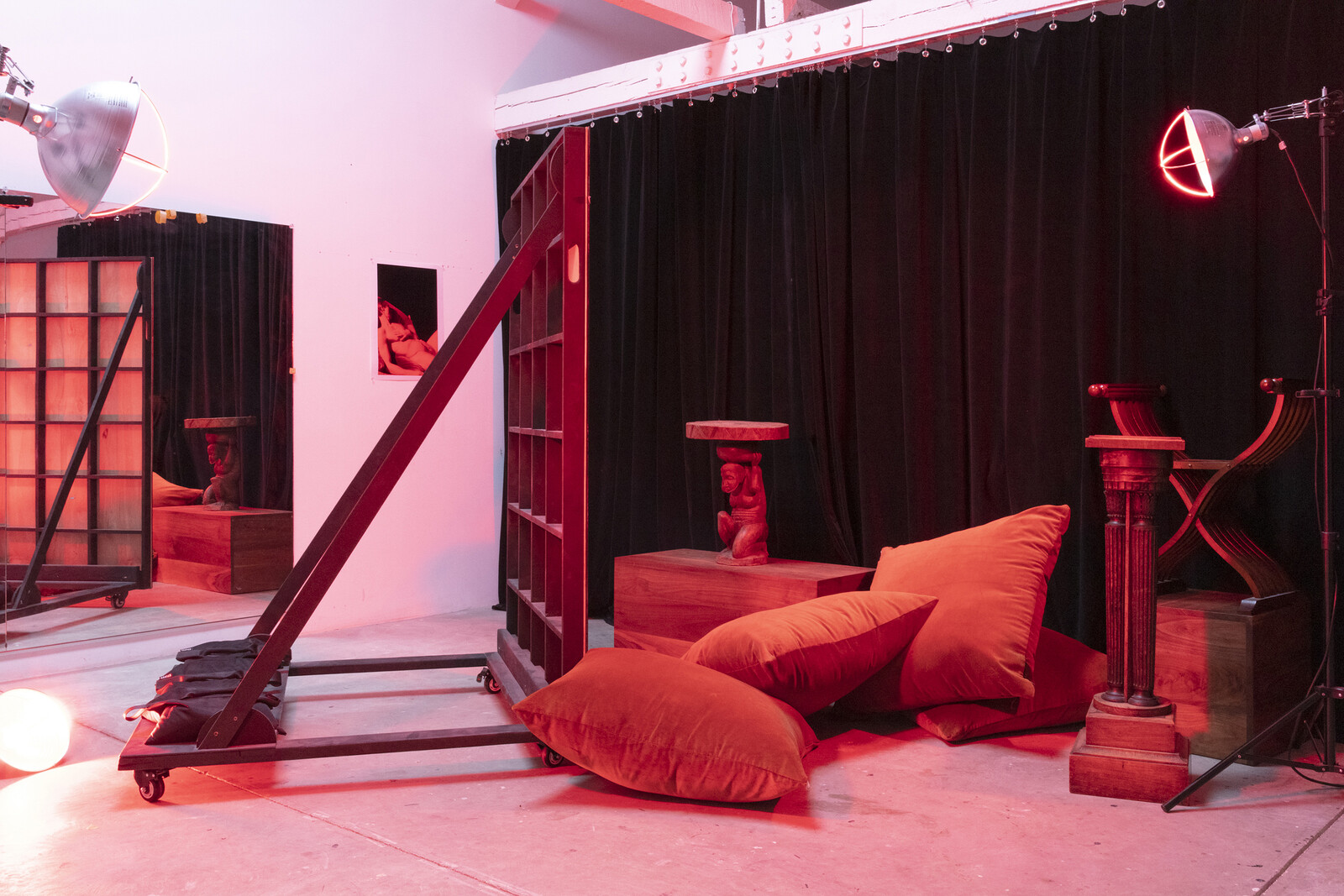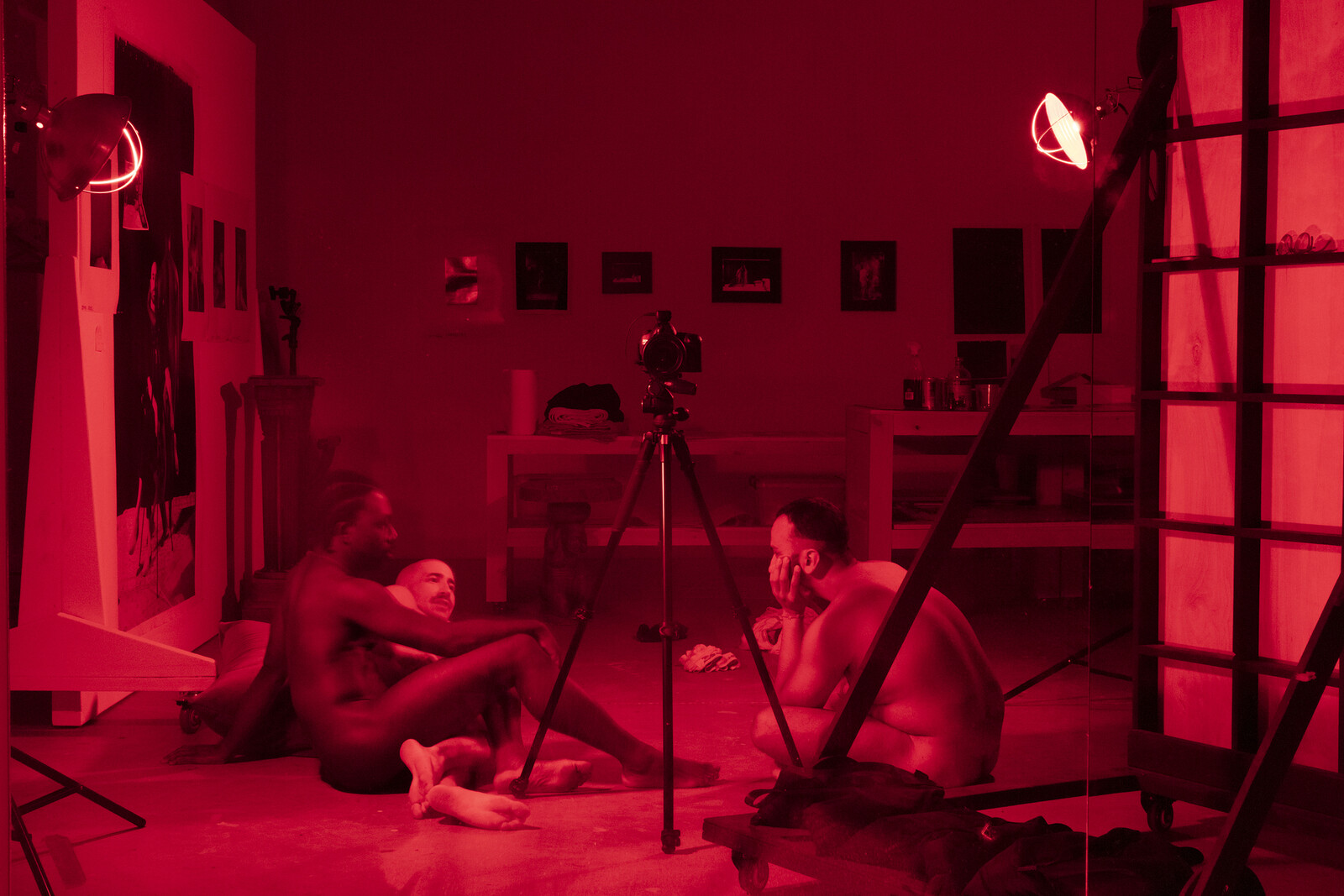1. Why did you decide to go into teaching?
Teaching is a stable if difficult job and incredibly freeing for my studio practice. It is a practical job that I both love and dream of quitting almost weekly. But I really am passionate about teaching and care deeply for the students, to whom I am very loyal. Connecting with them is what keeps me going. This happens in studio visits, looking at artists’ work together in exhibitions and books, having freewheeling or in-depth conversations, and seeing their achievements. I don’t enjoy the overwhelming amount of administrative work and grading—I would abolish grading in art.
Catherine Opie connected me to my first teaching job, after Kaucyila Brooke at CalArts reached out to her for a recommendation for someone to step in short-notice to replace a full-time faculty member for a semester. Cathy believed that I could fill in, just six months after completing my MFA. I was terrified that I wouldn’t be able to live up to the expectations, even though I had ten years of arts administration behind me. I still have constant imposter syndrome in the classroom. Later, Pradeep Dalal and Fia Backström, who were at Bard MFA, invited me to teach there, which I did for two summers.
When my career picked up I contemplated taking a break from teaching and supporting myself through my own work, but I realized that what I actually wanted was stability, not the risk of putting everything into one basket. So, I bought a house and seriously applied for a full-time job, the one I have now at the University of California, San Diego.
2. What drew you to your school and what is your teaching philosophy?
Amy Adler recruited me to UCSD, so she drew me to the school when I wasn’t considering it. And Cathy Opie of course insisted that I apply. I never thought I’d make it to the final round, and I credit Vishal Jugdeo, a friend who had recently been hired at UCLA, for getting me over the finish line with my application and clarifying why the opportunity to work at a UC was something not to pass up. But once I started thinking about UCSD, something clicked: it was in the University of California system, and being a public school, graduate students receive full funding. I’m always talking about the people who led me to where I’m at now, and I really do believe it takes a community of support.
3. What theory and art history do you consider most essential for your students? What artist or artwork do you refer to most often?
I’d be curious to ask my students that question. When it comes to art history, artists, and artworks, I begin by paying attention to what students are interested in and do my best to find references that illuminate, complicate, and add questions to what they are drawn to. So, there’s no one answer.
4. How do you navigate generational or cultural differences between you and your students?
I ask a lot of questions and try my best to listen and observe. Teaching undergrads makes me feel old! I am (only!) forty, but my millennial reference points for photography, to me, sometimes seem incomprehensible to my Gen Z students, whose introduction to photography came through smartphones rather than SLRs, DSLRs, or point-and-shoot cameras.
Navigating cultural differences is hardest with our international undergraduate students, so I do my best to encourage discussion and create a space where everyone feels able to speak. But I don’t think I’ve figured it out yet, and there is a lot of work to do, especially once we pass technical instruction and discuss contemporary art and context in the intermediate and advanced classes.
Really where I have found the challenges of intergenerational differences most productive is in graduate teaching and advising with our queer, BIPOC, immigrant, and first-generation students. They are the most passionate, thoughtful, and vocal members of our community, and I am constantly learning from them about language and theory, aspects of self-determination, and issues of concern and advocacy. They keep me on my toes. For me, it has been a process to see myself as a member of the faculty moderating, translating, critiquing, and advocating for these shifts rather than being part of these students’ cohort, if that makes sense. I only completed my MFA six years ago, and in many ways I still feel so close to the students and their experience.
5. What changes would you like to see in art education?
I’d like to see more equitable funding for students and more resources directed to core aspects of the program. We need increased funding for education to relieve rent and debt burdens. Schools do not need to keep expanding real estate developments and name-brand projects just for show. It’s uncomfortable, in a sense, to answer these questions while simultaneously navigating the University of California UAW strike of our graduate-student workers and researchers. UC’s priorities are mixed up, and the arts and humanities get lost in the shuffle.
6. What is your educational background? Did you arrive at art from another field?
I come from an educationally privileged background. My mom has a master’s and my father a doctorate. I attended private grade, middle, and high schools and completed my BFA in photography at the Tisch School of the Arts at NYU. I never considered anything else. But I am thankful for an intro to photography summer course that I took after my sophomore year of high school at UC Riverside. It changed my life. Before that I had wanted to pursue computer science, or something like that, in college. Ten years after my undergrad I decided to go back to school to pursue an MFA, and I thought more carefully about private versus public education. I knew I wanted to attend a public school, and that school was UCLA.
7. How have recent cultural movements and activism informed your curriculum?
I have been listening and taking time to respond more slowly and carefully to contextualize cultural movements and activism. That is not necessarily going to satisfy students’ demands, and I don’t think that’s my job. I want to make space and encourage them to lead.
In spring 2020, and every quarter since, I have posed the following challenge to white artists and art students: Rewrite your artist statement to include the word “whiteness.” It’s up to you to figure out what to do with it. It began as a series of Instagram posts. It’s interesting but not surprising to list the range of responses. Those include thank-yous, requests for help in doing the work, anger at not capitalizing “White,” and so forth. Whether we like it or not, artists of color have been made to answer for the questions of race and ethnicity. Gay, queer, and trans artists have been asked to answer for the questions of gender and sexuality. White artists, as far as I know, have never been asked to do something this simple. And it’s the hardest thing. Queer white artists may have answered for gender and avoided race, but I don’t let them off the hook.
When it comes to my curriculum, I continue with something that I have consciously done since I began teaching, which is to never have thematic weeks on identity. No segregating issues of power, control, self-determination, liberation, agency, and activism to the realm of identifiable classes of people. But what I mean is that I weave awareness of class, race, gender and sexuality, history, and activism into discussions from the very introduction of the camera and through to the artists we look at week-by-week.


Paul Mpagi Sepuya, Daylight Studio Mirror (0X5A3207), 2022. 50 × 75”. Courtesy of the artist, Bortolami, DOCUMENT, Galerie Peter Kilchmann, and Vielmetter Los Angeles.
8. How much structure or independence do students have in your courses?
I prioritize independence. After technical or hands-on instruction, I prefer everything to be critique. So, I teach introductory courses to photography—digital and analogue—and critique courses. One is structured on gaining proficiency with certain technical aspects of the medium, paired with related practical and conceptual applications, and the other is based on producing a final portfolio of work around the theme of the class through self-directed progress and group critique.
9. How does the program connect students to the surrounding art scene? How do they learn outside the classroom?
It comes down to individual faculty mentor relationships, and how each of us integrates things like visiting artists, trips to local museums and galleries, and other opportunities into our classes and advising. We, as a faculty, foster many relationships within San Diego and Los Angeles, and Tijuana and Guadalajara are important places of collaboration for many faculty and students. These connections are both formal and informal and follow from our individual practices and relationships out in the world.
10. What advice do you give to your students as they leave school and enter the field?
Stay in touch! In the best cases, the kind of mentorship and friendship that begins in school will be the backbone of a practice as well as moral and community support going forward.
I tell undergraduate students to wait and not rush grad school if they are young and coming right from high school. Take time, a lot of time. Look broadly beyond the idea of the singular artist figure—whatever it is they’ve imagined—to see the entire landscape of careers that really produce, support, disseminate, and contextualize art. There’s so much they can do.
And for graduate students, I tell them to think of grad school as a beginning, not a culmination. And again, to please stay in touch.














